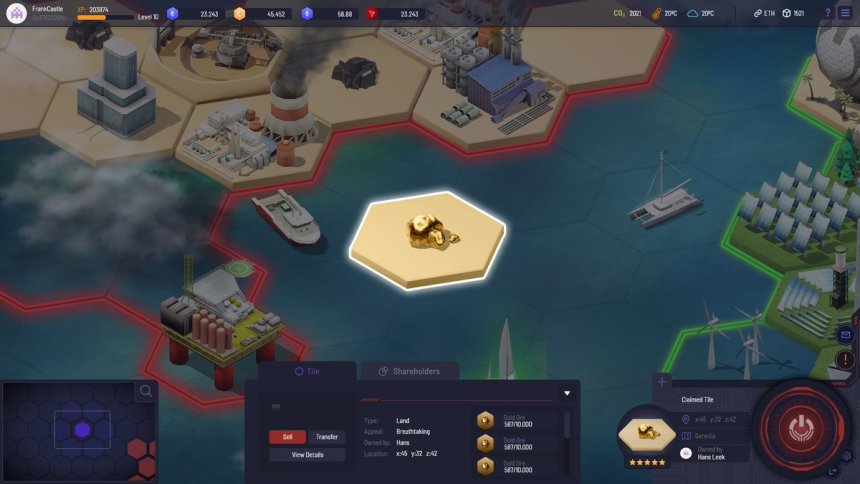Several aspects of play-to-earn gaming can draw in a mainstream crowd.
A long-term developer vision combined with no upfront investment requirements is an excellent place to start. Cryptopia wants to highlight those aspects and more through its blockchain gaming venture.
Gaining Traction is Essential
Despite the growing popularity of play-to-earn gaming, most projects have one crucial flaw in common. They all require players to either make an upfront investment or hold their rewards for long periods in the hopes of prices going up. While that is a sensible economic model, it also prevents the mainstream from embracing these projects from day one. Instead, most play-to-earn games only cater to existing crypto users rather than those looking to venture into the world of cryptocurrency through blockchain gaming.
Cryptopia takes a different approach. It is one of the few games merging free-to-play and play-to-earn mechanics. That is nothing new, yet the games providing this option often lack content or user retention. Cryptopia provides multiple game modes for players to earn rewards and monetize in-game resources to counter those issues. Becoming an Adventurer or a Tycoon – or a hybrid of the two – as the player defines how they want to approach this virtual world.
Blockchain gaming is the embodiment of decentralisation through a distributed ledger. Unlike server-based games, blockchain-based projects remain free from censorship, government intervention, or third parties controlling the gaming world. Instead, all players get to participate in voting and governance, with a direct line of communication between games and developers in Cryptopia.
Moreover, it enables players to explore unlimited possibilities as to how they want to experience this game environment. An extra benefit is how all actions have consequences in Cryptopia. Any decision made by any player can change the game forever, not just for them but for all gamers. It is a benefit of being 100% on-chain for all gaming purposes, ensuring the unexpected can happen at any moment.
Multiple Game Modes Are Needed
Another aspect holding back blockchain gaming today is how games are seemingly one-dimensional. For instance, a game is either player-vs-environment or play-vs-player oriented. While some projects offer both game modes, it often requires compromising on one or both. Finding a balance between the two is never easy, but developers can explore other options. Games shouldn’t shoehorn people into one or two default options. Instead, gamers should be able to forge their own paths.
That option is now available through Cryptopia. Players can shape the overall experience to their liking. Some will want to quest and battle foes in the Adventurer mode. Others want to maximise their earnings and passively create wealth by buying land plots and extracting the resources, which can be sold as tokens. The third type of player may combine both elements and forge a very interactive gaming experience. The choices are virtually limitless, and no one needs to make any upfront investment to begin playing.
Being an Adventurer ensures players can engage in quests, professions, building, and enhancing your character’s skills. Highly-skilled players can take on harder quests, gain better rewards, and so forth. It is then up to players to maximise those rewards, either for themselves or through other players. An Adventurer/Tycoon hybrid is certainly possible for those looking to put their earned rewards to use.
The Tycoon option revolves around building and expanding one’s personal decentralised finance empire. Players acquire land tiles, extract resources, and either sell them or use them to produce other tokens – which they can also trade. Owning adjacent land tiles by players of the same faction establishes a faction zone. A larger faction zone results in better-functioning buildings, making it a worthwhile option for those looking to tap into a passive revenue stream.
Cooperation And Transparency
One may argue that there won’t be sufficient affordable land tiles in Cryptopia after a while. The developers thought of that and ensured players could cooperate. More specifically, any player can set up a publicly-traded company to purchase land. Other players can buy shares of the company and share mined resources or other earnings in a corporate manner. Players can buy fractional shares, too, ensuring this option remains accessible and affordable to everyone.
Building a vast blockchain game and economy requires trust and transparency. Cryptopia makes sure there are no pre-mined coins, unfair advantages, token supply shenanigans, or anything else. The game’s code is visible through smart contracts accessible via GitHub. That transparent approach is crucial when building a play-to-earn game accessible by anyone without having to use external software or having specific skills.
Conclusion
The evolution of play-to-earn gaming is exciting. Whereas the first generation focused on rewarding early adopters and investors, projects like Crytopia highlight how games should be for everyone while still providing a personalized gaming experience. Gamer empowerment is about more than in-game items, as every player needs to feel welcomed and needed, regardless of how they want to explore the game world.
Moreover, one can only hope to see more free-to-play play-to-earn games emerge. Attracting mainstream users requires removing any barriers to entry. Expecting people to own cryptocurrency and be familiar with Web3 wallets like Metamask is not viable. This industry needs more of a seamless experience with potential rewards, personalization, and transparency.
